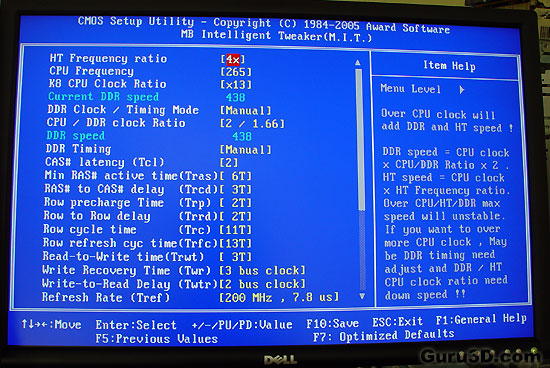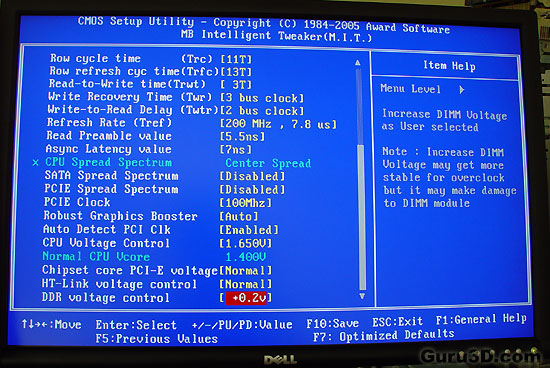Page 13
Hardware and Software Used
Here we begin with the benchmark portion of this article, but first let me show you our test system plus the software we used.
![]()
Mainboard
Gigabyte GA-K8NXP-SLI motherboard, nForce4 SLI, Socket 939
Processor
AMD Athlon 64 FX-57+, Socket 939 - read
Graphics Cards
ATI Radeon X1800 XT - read
Memory
2048 MB (2x1024MB) DDR1 - PC-3200 2-3-3-6 Corsair - read
PSU
Enermax Liberty 620 Watt - read
Software
Windows XP Professional SP2
NVIDIA nForce4 Platform Driver 6.39
DirectX 9.0c End User Runtime
Catalyst 6.5
RivaTuner 2.0 (tweak utility)
Sandra (SiSoft)
Half-Life 2 (Guru3D custom timedemo)
Far Cry
AquaMark 3
Prey
Now for some actual overclocking
Obviously you need have a PC ready that can actually overclock. We have the Gigabyte mainboard that can cram 1.8 volts into the AMD FX-57 CPU if we want to, we have the fast memory and obviously we now have the cooling for it.
After the PC started and boots into windows we notice that the temperature of the CPU idles at roughly -22 Degrees Celsius when it's not overclocked. So basically what we did for our overclock was drop the HT frequency towards 4 and set the FX-57 multiplier at 13. We now gradually started raising the HTT (FSB) until the system won't post anymore. We did this in 5 MHz increments.
Oh and yes .. you'll need time and a lot of patience for a good massive stable overclock.
 |
||
The system halted at 240 MHz which is 3120 MHz. Already a great OC huh ? But we want to take it even higher ... and we can.
 |
||
The next step was increasing voltages throughout the system. We boosted the CPU core voltage towards 1.65V, and gave the DDR memory some extra V's also to be able to cope with the increased HTT/FSB. We now have more breathing space for the system to cope with. Extra voltage will heat up the processor though, but hey .. at -20 Degrees C you can try a lot.
Would you like to learn where we ended this preposterous enterprise of the eternal MHz ? Have a look at the next page.
